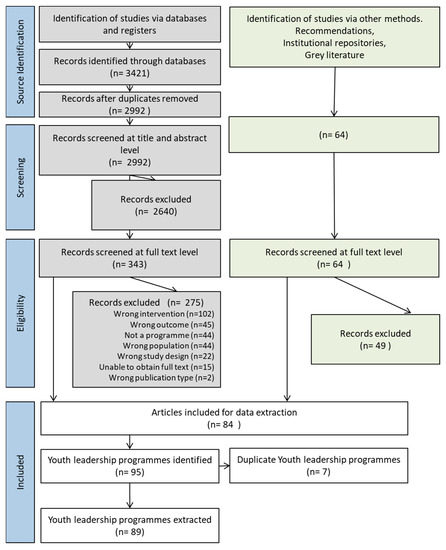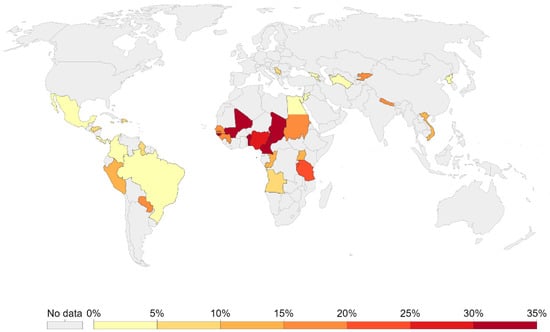Child Abuse and Child Protection
A topical collection in Social Sciences (ISSN 2076-0760). This collection belongs to the section "Childhood and Youth Studies".
Submission Status: Closed | Viewed by 29409Editor
Topical Collection Information
Dear Colleagues,
Over the past fifty years or so, child welfare—and specifically, child protection—has come under intense scrutiny from a variety of groups. The press has been a major source of criticism of child welfare organizations and has, therefore, raised public awareness about various scandals and “failures” with respect to the protection and welfare of children. Press criticism tends to bifurcate along the lines of identifying individual failures (social workers, medical practitioners, named senior bureaucrats and political figures) or identifying “systemic” failures.
Press criticism also provides opportunities for various non-governmental or philanthropic organizations to advance their own critiques and philosophies. Often these critiques bifurcate over whether there is too much, or too little, government intervention into citizen’s private lives. It is symptomatic of these critiques that they tend to argue there are either too many, or too few, children in government care.
Within governments themselves, there has been a veritable avalanche of inquiries, policy reviews, blueprints, research into “what works”, experiments with standing or ad hoc formal reviews and audits (both internal and external), and assorted other initiatives, each hoping to untie the Gordian knot of child welfare and, particularly, child protection. Here, too, we find a binary as emphases oscillate between contemporary issues and historical events and legacies, which seems to belie the oft claimed benefit that historical inquiries ensure past abuses and mistakes will not be repeated in the present.
As well, developments in identity politics over the last several decades have complicated the more traditional debates about whether child abuse is caused by private pathology or class conditions. The collaborationist role of child welfare and child protection in the assimilation of marginalized groups, races, political movements, and ethnicities, while still contested by some, is now a generally accepted truth. In my own country of Canada, for example, the legacy of Residential Schools and the “Sixties Scoop” are a constant shadow over every public policy decision from pipeline construction to the choice of appropriate welcoming remarks when opening a meeting.
Lastly, the past fifty years or so have brought about a transformation of the way children are thought about. Both jurisprudence and academia now count children as active agents who create their own subjectivities and bear their own specific rights. The problem of how to incorporate children’s voices and opinions into traditional notions such as “best interests of the child” remains a fraught project. This is a widespread difficulty, but it is especially sharp in child protection work because it potentially means adults no longer have a monopoly on defining and deciding what constitutes acceptable levels of risk.
Despite all this effort, children are still entering state care. Across the English-speaking world (which is the world I’m familiar with), and allowing for periodic fluctuations, the number of children in care is at best static and, in most jurisdictions, continues to increase. This raises two important questions. First, after all the effort over the past fifty years, we should expect fewer children in government care as a result of systemic and practice improvements. Is this lack of progress a case of failure, or is it that (as Ian Hacking pointed out thirty years ago) more things count as child abuse now than did in the past? Is this too much government? Or does it reflect how the dominance of neoliberal policies demanding self-responsibility has left families with too much responsibility but too few resources. Is this, then, too little government?
Secondly, if the numbers of children entering care are going to continue to rise—or at least stay the same—where are these children going to live? Since the beginning of the twentieth century, institutional care has been effectively driven from the list of options. If the concerns of early reformers about the lethargic, dependent, and dull children large institutions allegedly produced weren’t enough, the revelations of recent inquiries about historical abuse have ensured that the word “institution” is exorcised from child welfare. Institutional care has been replaced, of course, with foster care, but even from its earliest appearance as “boarding out”, foster care has had its critics. In the contemporary Canadian experience, for example, fostering has been rocked by scandals pertaining to children being killed by relatives in kinship homes, the high incidence of homelessness and hotel placements of youth, and the persistent problem of placement instability.
Too often these two questions are treated as independent of each other. However, this is at best wishful thinking. The Gove Inquiry into child protection in British Columbia, Canada, for example, contained testimony from children in care who stated flatly that entry into care depended as much, if not more, on the availability of resources as it did on the severity of abuse. These youth knew the score. That same review received testimony from social workers who stated equally flatly that they simply didn’t have the residential resources to cope with the children they were encountering. Significantly, neither of these themes were present in the Inquiry’s final report. Indeed, the issue of finding adequate homes for children in care is generally given short shrift, even by those inquiries that seem eager to dramatically increase the number of children in government care as a result of “child-centered” practice and safeguarding rhetoric.
This collection of papers will examine these linked problems from both a pragmatic and theoretical perspective. Why is it, despite spending enormous amounts of time and treasure on the problem, children still enter care in high numbers, and why is the system that receives them apparently so inadequate? This is not an exercise in locating blame; we assume that if practical and ethical solutions could be had, the army of child welfare professionals engaged in the work would have implemented them. Instead, this issue assumes child welfare and child protection are composed of a series of wicked problems that collectively create a perpetually “failing” system. If this assumption is correct, then the problem is not one of finding solutions, but of learning how to adapt to the realities of wicked circumstances.
Dr. Gerald Cradock
Guest Editor
Manuscript Submission Information
Manuscripts should be submitted online at www.mdpi.com by registering and logging in to this website. Once you are registered, click here to go to the submission form. Manuscripts can be submitted until the deadline. All submissions that pass pre-check are peer-reviewed. Accepted papers will be published continuously in the journal (as soon as accepted) and will be listed together on the collection website. Research articles, review articles as well as short communications are invited. For planned papers, a title and short abstract (about 250 words) can be sent to the Editorial Office for assessment.
Submitted manuscripts should not have been published previously, nor be under consideration for publication elsewhere (except conference proceedings papers). All manuscripts are thoroughly refereed through a double-blind peer-review process. A guide for authors and other relevant information for submission of manuscripts is available on the Instructions for Authors page. Social Sciences is an international peer-reviewed open access monthly journal published by MDPI.
Please visit the Instructions for Authors page before submitting a manuscript. The Article Processing Charge (APC) for publication in this open access journal is 1800 CHF (Swiss Francs). Submitted papers should be well formatted and use good English. Authors may use MDPI's English editing service prior to publication or during author revisions.








